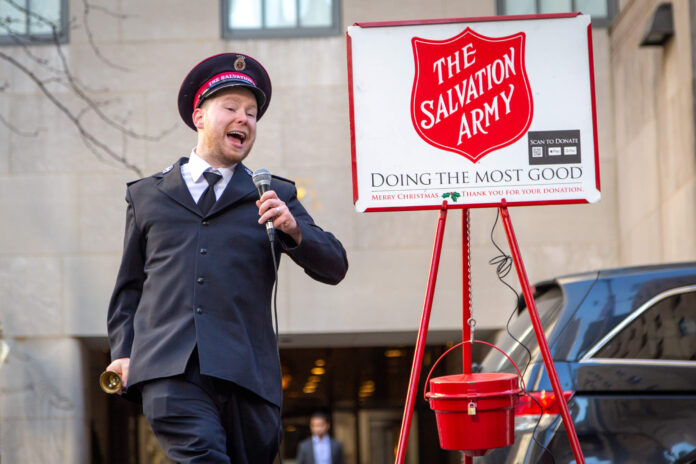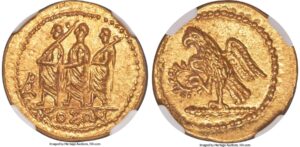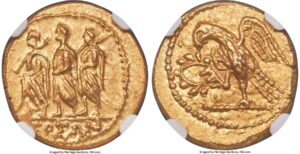
In many countries, the bell-ringers of the Salvation Army, along with their red kettles for donations, are a familiar sight on pavements and street corners at Christmastime. The Salvation Army is a free church and charity committed to helping people in need. It focusses particularly on helping homeless people, but it also runs homes for children and senior citizens. Of course, in order to do all this, they need money – and so, in the weeks leading up to Christmas, volunteers work tirelessly, collecting donations on the streets.
It’s no different in Tampa, Florida, where the local Salvation Army raises money for homeless shelters. On emptying their donation kettles last December, some of these volunteers were astonished to find two ancient gold coins among the usual dollars, quarters and dimes. Thankfully, they did the right thing and consulted some experts – and, at the end of April, the coins were sold by Heritage Auctions.
If you’re breaking a sweat at the thought of those fragile, ancient coins rattling around a donation tin with the rest of the change, let us reassure you: both coins were donated in holders.
One of the coins was also wrapped in a note explaining the anonymous donor’s intentions: “My hope is to continue drawing attention and publicity to such a wonderful organization. The whole country should know about the amazing things the Salvation Army does for their community. Doing the most good.’ (The last sentence is also the slogan of the Salvation Army in the USA, writer’s note.)

Roman in Appearance Only
The two coins are very similar and date back to 44 to 42 BC. They are Geto-Dacian coins of Koson and the motifs closely resemble those on the denarii of the Roman Republic. Those familiar with Roman Republican coins will quickly notice that the coins are modelled on a type of denarius from 54 BC, minted on the orders of Marcus Junius Brutus – who would later become famous for murdering Caesar – in his early years as moneyer. With this issue he remembered the story of his ancestor of the same name, who murdered the last Roman king.
The coins of Koson have been known about, and the subject of lively debate, since the Renaissance – even Erasmus of Rotterdam was involved. It is assumed that Koson is the name of a king.

Supporting a Good Cause
But let’s return to the present. At the end of April, the coins were sold at the Central States World Coins & Ancient Coins Signature Auction at Heritage Auctions in the Texan city of Dallas. One was sold for 1,800 US dollars, the other for 3,000 US dollars, meaning both coins sold for more than the estimated price (1,500 and 2,000 US dollars respectively). All proceeds went to the Salvation Army – Heritage even donated its premium to the charity.
This money must be a welcome addition to the approx. 400,000 dollars that the Salvation Army raises in donations, in Tampa alone, every Christmas. And it’s particularly important this year, as the Salvation Army is doing a great deal for the alarmingly large number of people in poverty due to coronavirus.
You can find out more about the Salvation Army and what they do on their website.
You can view the results of the Heritage Auction, as well as both coins, online, on Sixbid for example.



